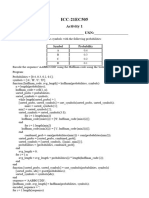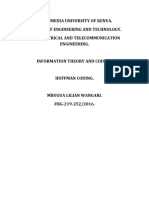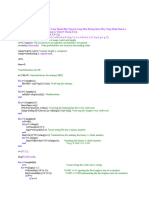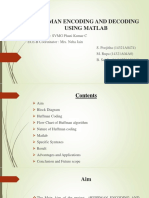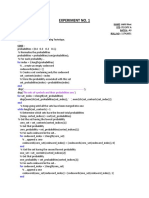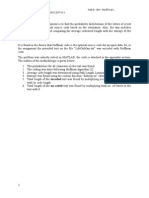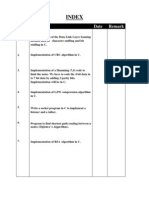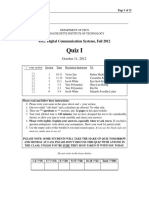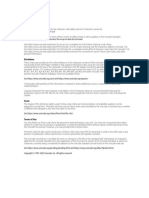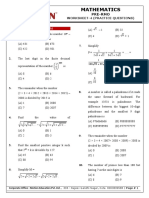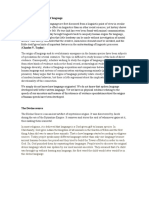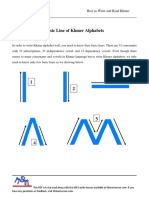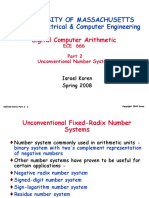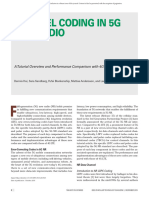0% found this document useful (0 votes)
16 views32 pagesMdcs Lab Manual
The document outlines a series of experiments for a Multimedia Data Compression and Storage Laboratory, including Huffman coding, run-length encoding, Lempel-Ziv algorithm, arithmetic coding, image conversion using a shell script, and extracting images from a video. Each experiment includes an aim, required software, detailed procedures, and MATLAB code examples. The results confirm successful execution of each program, demonstrating various data compression techniques and image processing tasks.
Uploaded by
vvishvashvarCopyright
© © All Rights Reserved
We take content rights seriously. If you suspect this is your content, claim it here.
Available Formats
Download as PDF, TXT or read online on Scribd
0% found this document useful (0 votes)
16 views32 pagesMdcs Lab Manual
The document outlines a series of experiments for a Multimedia Data Compression and Storage Laboratory, including Huffman coding, run-length encoding, Lempel-Ziv algorithm, arithmetic coding, image conversion using a shell script, and extracting images from a video. Each experiment includes an aim, required software, detailed procedures, and MATLAB code examples. The results confirm successful execution of each program, demonstrating various data compression techniques and image processing tasks.
Uploaded by
vvishvashvarCopyright
© © All Rights Reserved
We take content rights seriously. If you suspect this is your content, claim it here.
Available Formats
Download as PDF, TXT or read online on Scribd
/ 32






